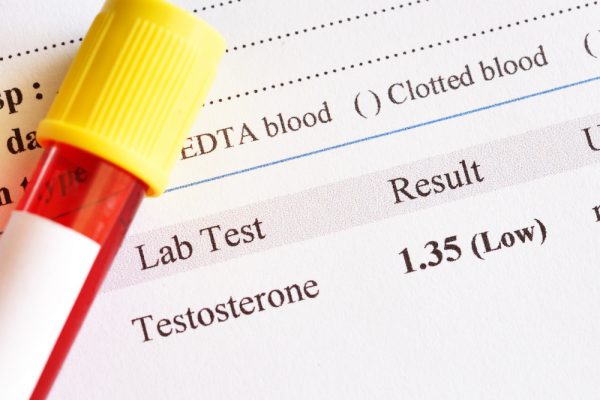Testosterone, the primary male sex hormone, is crucial for maintaining physical fitness, a healthy sex drive, and an overall high quality of life.
It is an androgen that regulates male physical characteristics, sexual performance, and sex drive. The normal range for testosterone in men is typically between 300 and 1,000 nanograms per deciliter (ng/dL) of blood or 10 to 35 nanomoles per liter (nmol/L).
Low testosterone, also known as “low T,” occurs when testosterone levels fall below the normal range. Conversely, abnormally high testosterone levels may indicate an underlying health issue. Testosterone levels can fluctuate throughout a man’s life due to factors like aging, lifestyle choices, habits, and overall health.
How to Check Your Testosterone Levels
Understanding the normal range of testosterone levels, the symptoms and causes of low testosterone, and how to check and increase testosterone production are essential for maintaining optimal health. To ensure accurate information, it is advisable to consult healthcare providers or reputable labs for specific criteria regarding testosterone ranges.
Checking testosterone levels is a straightforward process that involves a blood test known as a testosterone levels test. During this test, a healthcare professional will collect a blood sample from a vein in your arm using a small needle. The sample will be analyzed in a laboratory, and you will receive information about your testosterone levels. It’s important to note that low testosterone can have both physical and non-physical symptoms, and discussing concerns with a TRT clinic is the best way to start the evaluation process.
Symptoms of Low Testosterone Level in Men
- Reduced sex drive
- Difficulty sleeping, including insomnia
- Erection problems, including erectile dysfunction (ED)
- Reduced strength and muscle mass
- Increased body fat
- Depression and difficulty concentrating
- Reduced bone density and strength
- Low sperm count
Causes of Low Testosterone Level in Men
- Aging (common factor)
- Obesity or significant weight gain
- Low thyroid function (hypothyroidism)
- Abuse of illicit drugs and/or alcohol
- Congenital defects affecting the reproductive system
- Use of certain medications, such as chemotherapy drugs
- Some surgical procedures, such as certain types of brain surgery
- Injury to the testicles or diseases like testicular cancer
- Abuse of performance-enhancing drugs, such as anabolic steroids
- Many diseases and disorders, including hemochromatosis, uncontrolled diabetes, kidney failure, obstructive sleep apnea, and others
How to Increase Your Testosterone Levels
Fortunately, low testosterone is treatable. Lifestyle changes, dietary adjustments, and supplements can help increase testosterone levels if they are mildly low. These changes may include improving sleep habits, engaging in regular exercise to boost testosterone production, reducing stress levels, managing weight through a healthy diet and physical activity, and considering testosterone-boosting vitamins and supplements like ashwagandha, zinc, magnesium, and vitamin D.
Options to Increase Your Testosterone Levels
Testosterone Replacement Therapy (TRT) is an option for individuals with clinically low testosterone levels or significantly lower levels compared to the norm for their age. If you fall into this category, your healthcare provider may recommend TRT as a treatment approach.
TRT involves the use of man-made testosterone to elevate the overall level of testosterone in the body. Testosterone is available in various forms, providing flexibility in treatment options. These forms include transdermal patches, topical gels, tablets, implants, or injections.
One of the advantages of TRT is its quick action in providing relief from the symptoms associated with low testosterone.
While it is typically more effective in younger men who have low testosterone levels, TRT can also be beneficial for older men seeking to address their low testosterone symptoms.


